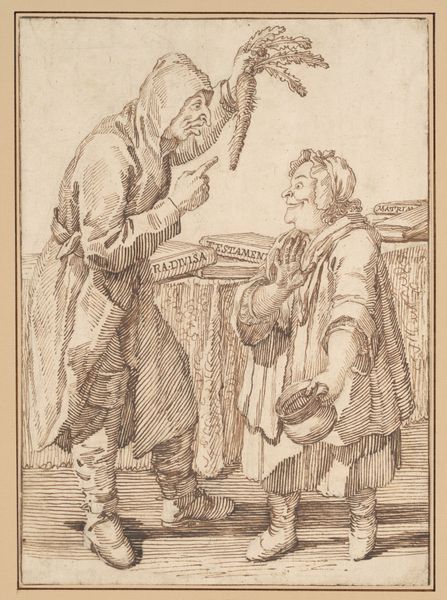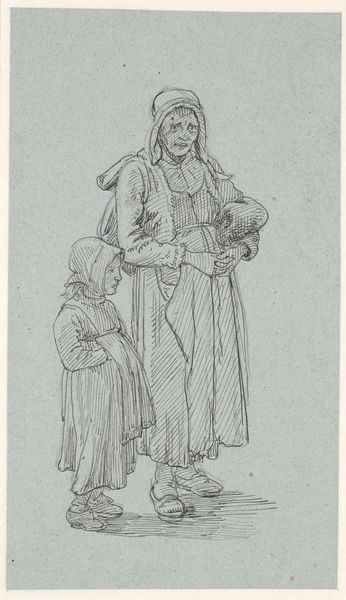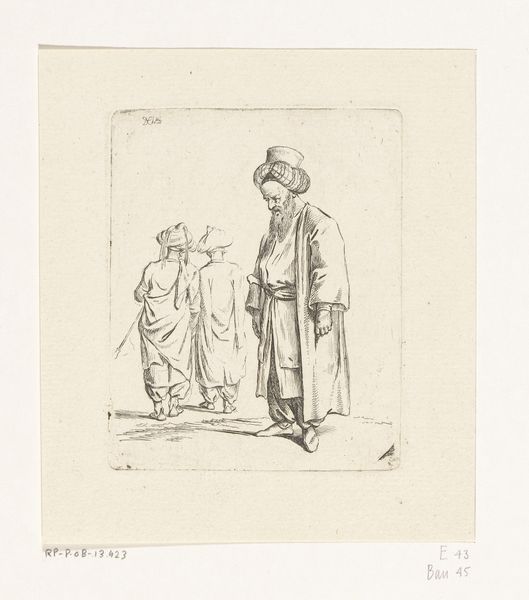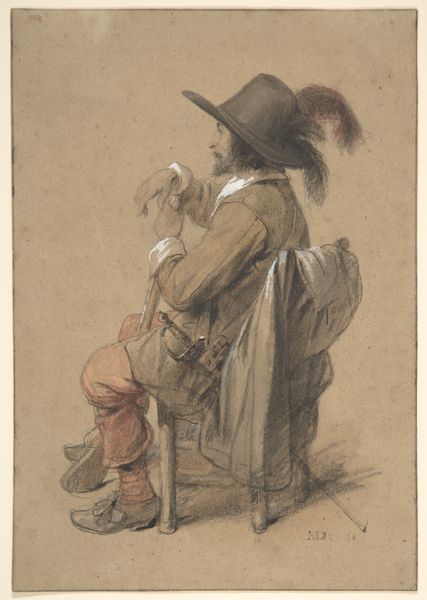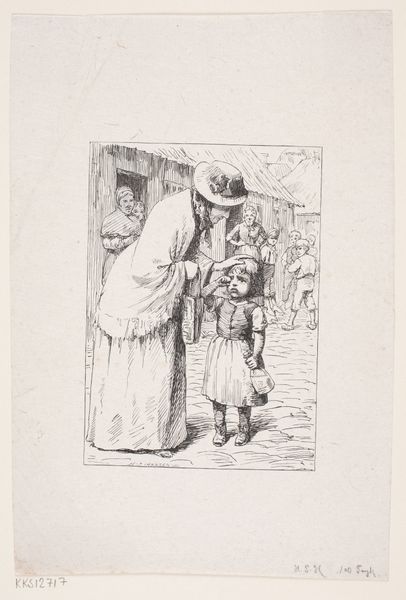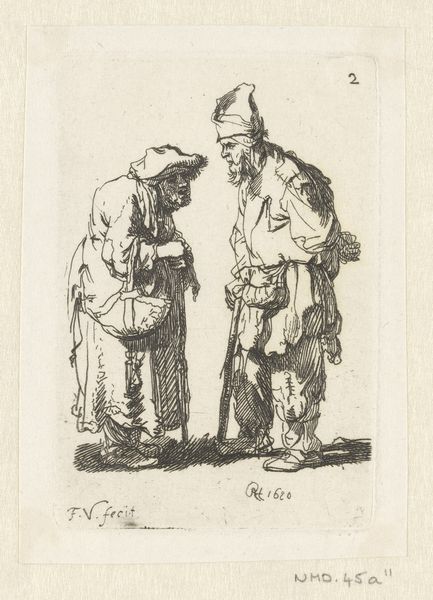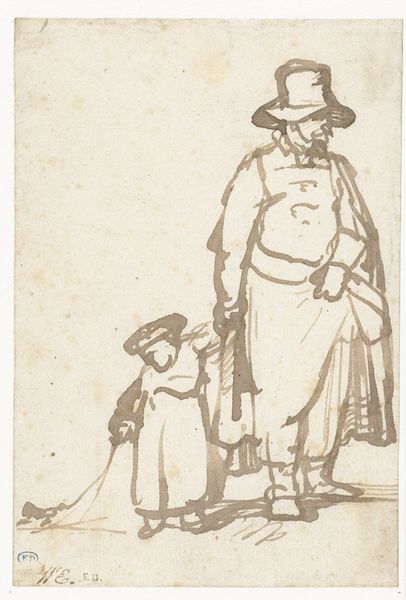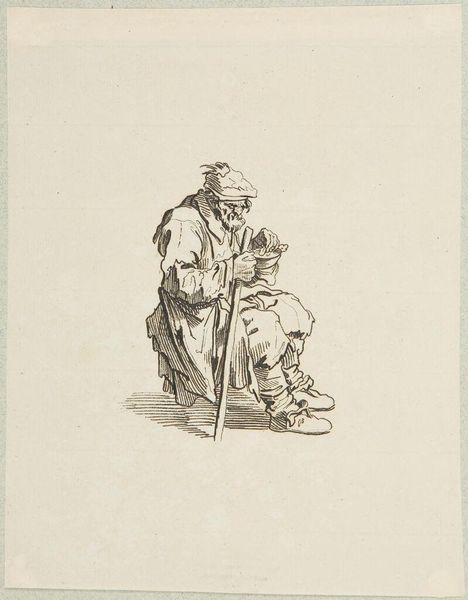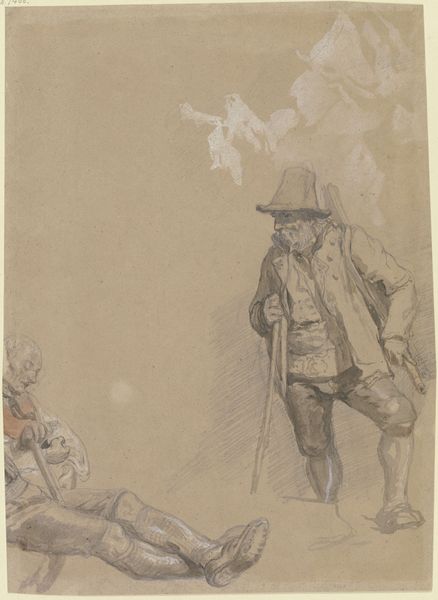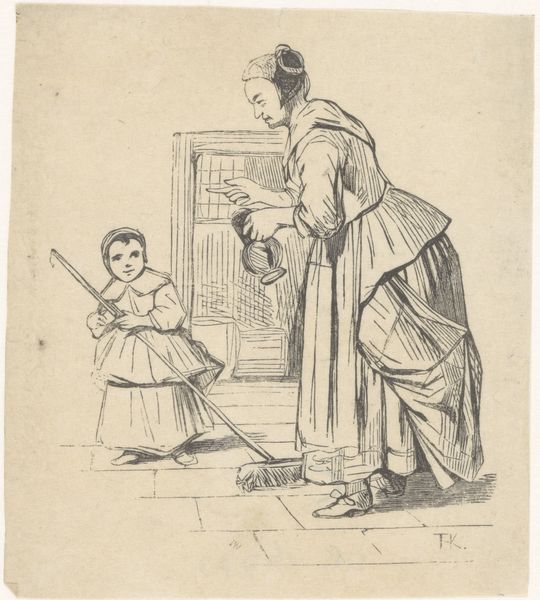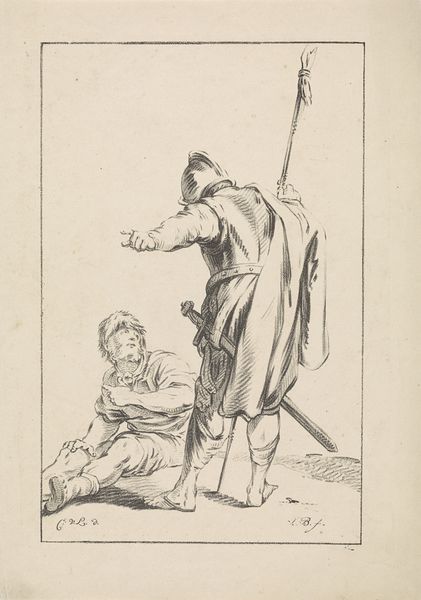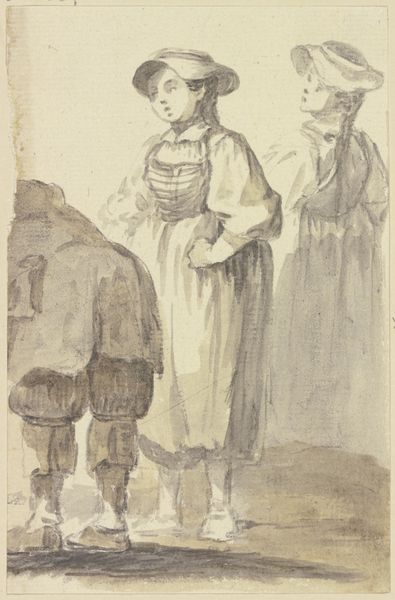
drawing, paper, ink
#
portrait
#
drawing
#
imaginative character sketch
#
quirky sketch
#
cartoon sketch
#
figuration
#
paper
#
personal sketchbook
#
ink
#
idea generation sketch
#
ink drawing experimentation
#
pen-ink sketch
#
line
#
sketchbook drawing
#
genre-painting
#
storyboard and sketchbook work
#
sketchbook art
#
realism
Dimensions: height 169 mm, width 102 mm
Copyright: Rijks Museum: Open Domain
Curator: Here we have Johannes Tavenraat's ink drawing, "Old Woman and Young Girl," created in 1876. It's currently held in the Rijksmuseum. Editor: The scene feels a little unsettling, doesn’t it? The old woman looms large, and the young girl seems... vulnerable in comparison. There’s a sense of imbalance. Curator: Imbalance is a key aspect of many power dynamics. Let’s think about what the artist is showing us through this contrast. Consider the role of the elderly in the 19th century and expectations around how women especially were portrayed: submissive, gentle. We are certainly getting none of that from the elder woman here. Editor: Her gnarled features are certainly a divergence from typical beauty standards of the time. I notice the ragged edges of her clothing and the deliberate use of dark ink to accentuate the depth of the shadows. There seems to be a focus on age, even decay. This departs from ideal representations of womanhood during the period, aligning with broader depictions of poverty and social struggle often highlighted in art. Curator: Absolutely. The rendering highlights the realities of aging and social disparity in the 19th century Netherlands, prompting considerations of the expectations of gender, class, and access to resources at this moment in history. It challenges accepted ideas, in ways not unlike the activist artists and writers who pushed back against colonialism and imperialism during the period. How do we give voice to the people rendered silent? What social structures need intervention to dismantle power inequities and challenge patriarchal oppression? I keep asking myself all this when looking at Tavenraat's drawing. Editor: I agree that this work encourages critical thinking. Seeing the drawing now through your eyes provides further context to the relationship depicted, highlighting a sense of concern about the roles afforded to these figures given the moment and space. Curator: Precisely! I appreciate that this drawing can become a jumping off point into bigger themes! Editor: Me, too. Thanks for this thought-provoking dialogue.
Comments
No comments
Be the first to comment and join the conversation on the ultimate creative platform.

